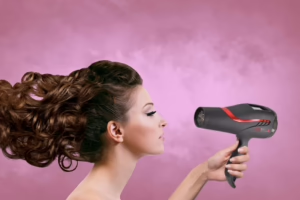Unlock Your Hair’s Potential: Tips for Every Texture and Length
Hair is often referred to as a person’s crowning glory, but caring for it can sometimes feel like a daunting task. Whether you have straight, wavy, curly, or coily hair, each texture and length has its unique needs and characteristics. Understanding how to unlock your hair’s potential is essential not only for aesthetic reasons but also for maintaining its health. This comprehensive guide will provide tips tailored to various hair types and lengths that can help you achieve vibrant, beautiful hair.
Understanding Hair Types
Before diving into specific tips, it’s important to understand the different types of hair. Hair is primarily categorized into four main textures:
- Straight Hair (Type 1): This type is often smooth and shiny, lacking natural volume.
- Wavy Hair (Type 2): Characterized by S-shaped waves, it has a medium texture and typically requires more moisture.
- Curly Hair (Type 3): This hair type is defined by tight curls and tends to be dry due to the difficulty of natural oils traveling down the hair shaft.
- Coily Hair (Type 4): Also known as Afro-textured hair, coiled hair is often densely packed and fragile but has extraordinary versatility.
The length of your hair—short, medium, or long—also significantly affects how it should be cared for.
General Care Tips for All Hair Types
Regardless of your hair type, there are fundamental practices that can help maintain its health:
-
Hydration is Key: Use a hydrating shampoo and conditioner that suits your hair type. Over-washing can strip natural oils, so aim for 2-3 washes a week.
-
Protection from Heat: Utilize heat-protectant sprays if you heat-style your hair. Limiting the use of heat tools can prevent damage.
-
Regular Trims: Schedule trims every 6-8 weeks to remove split ends and promote hair health.
- Scalp Care: A healthy scalp fosters healthy hair growth. Regularly cleanse your scalp and consider treatments like scalp massages to improve circulation.
Tips for Straight Hair
1. Choosing the Right Products
Straight hair can often appear oily at the roots while being dry at the ends. Opt for lightweight conditioners and styling creams that won’t weigh your hair down. Silicone-based serums can add shine without greasiness.
2. Styling Techniques
For straight hair, using a round brush while blow-drying can add volume. You might also opt for flat irons to achieve a sleek look, but always use a heat protectant.
3. Experiment with Layers
Adding layers can create movement and body, making straight hair look more voluminous and dynamic.
Tips for Wavy Hair
1. Enhancing Your Waves
To define your waves, use products like mousse or sea salt spray. Avoid heavy styling products that can weigh your waves down.
2. The Right Drying Technique
Let your hair air dry whenever possible to maintain your natural wave pattern. When you need to use a blow dryer, do it using a diffuser at a low setting.
3. Embrace the Second-Day Hair
Wavy hair often looks best on the second or third day post-wash. Refresh your waves with a light mist of water or a dedicated hair refresher to maintain style without the need for additional product.
Tips for Curly Hair
1. Moisturize, Moisturize, Moisturize
Curly hair often lacks moisture, so use a hydrating shampoo and conditioner. Consider a co-wash (conditioner washing) for cleansing without stripping natural oils.
2. Use the Right Comb
A wide-tooth comb is essential for detangling curly hair. Always detangle when your hair is wet and conditioned to minimize breakage.
3. Styling Techniques
Techniques like the “method” technique—applying products by “scrunching” them into your hair—can help maintain curl definition. Consider using curl creams specific to your curl type for better results.
Tips for Coily Hair
1. Protective Styles
Due to its fragility, coily hair benefits greatly from protective styles such as braids, twists, or buns. These styles help prevent breakage and promote growth.
2. Deep Conditioning
Incorporate deep conditioning treatments into your routine, aiming for at least once a week. Products rich in natural oils (like coconut or olive oil) can restore moisture and elasticity.
3. Avoiding Heat Damage
When styling, limit the use of heated tools. If you desire straightened hair, consider using a low-temperature method or a quality heat protectant to safeguard your curls.
Hair Care Across Lengths
Short Hair Care
Short hair can be edgy and chic, but it requires regular maintenance to keep it looking great.
1. Frequent Cuts
Short hair is easier to maintain but requires regular trims to keep the shape and style from growing out.
2. Texture Enhancing Products
Using a texturizing spray or pomade can help define shorter styles, giving them a polished look.
3. Daily Styling
Experiment with different styles like tousled waves or slicked-back looks. Using different styling products can add versatility to short hairstyles.
Medium Hair Care
Medium-length hair offers versatility, allowing for various styles and techniques.
1. Layering Techniques
Adding layers can give medium hair more movement and depth. Consult with your stylist to determine what layering techniques suit your face shape best.
2. Experiment with Styles
Medium hair is ideal for experimenting with braids, buns, and waves. Use this length to try out fun hairstyles without the commitment of long hair.
3. Keep It Healthy
Use leave-in conditioners or lightweight oils to maintain hydration without weighing down the hair.
Long Hair Care
Long hair often attracts admiration but requires a significant commitment to maintenance.
1. Regular Conditioning
Long hair can be more prone to dryness and splitting. Use intensive conditioners and hair masks to nurture your locks.
2. Protect Against Damage
Long hair is often damaged through styling; consider braiding it before bed to prevent tangling or using silk pillowcases to reduce friction while sleeping.
3. Styling Variations
Long hair offers endless possibilities, including updos, braids, or leaving it long and flowing. Products like curl enhancers or smoothing serums can help adapt your style to your preferences.
Nutrition for Hair Health
While external care is essential, internal health plays a crucial role in hair quality. A balanced diet rich in vitamins and minerals can significantly enhance the health of your hair. Consider incorporating the following nutrients:
- Protein: Hair is primarily made of protein. Incorporate lean meats, fish, beans, and nuts into your diet.
- Omega-3 Fatty Acids: These promote shiny hair. Foods like salmon, walnuts, and flaxseeds are excellent sources.
- Vitamins A and C: These vitamins help in the production of sebum, the natural conditioner of the hair. Include carrots, spinach, and oranges in your meals.
- Biotin and Zinc: These are crucial for hair growth. Eggs, seeds, and whole grains are great options.
Conclusion
Unlocking your hair’s potential is about understanding its unique texture and length. With the right caring methods—include hydration, nutrition, and tailored styling techniques—you’ll enhance your hair’s beauty and health. Embrace the journey of finding the perfect regimen for your hair type. Most importantly, be patient and kind to yourself as you explore what works best for you.
Investing time and effort into hair care can yield incredible results, giving you not just a beautiful mane but also contributing to your overall confidence and well-being. So go ahead, give your hair the love it deserves.
References
For further reading, explore sources such as:
- The Journal of Cosmetic Dermatology
- American Academy of Dermatology guidelines on hair care
- Journal of the Society of Cosmetic Chemists
Employing the right techniques personalized for your hair type will help you feel more empowered and confident in your hair journey.
Endnotes:
- [1] The Journal of Cosmetic Dermatology highlights the impact that proper hair care practices can have on hair health.
- [2] The American Academy of Dermatology suggests that understanding your hair’s unique structure is crucial for selecting appropriate products and care methods.
- [3] The Journal of the Society of Cosmetic Chemists discusses the latest research and technological advancements in hair care products, emphasizing the importance of tailored hair care solutions.
Remember, each person’s hair journey is unique, and the key is to enjoy finding what makes you and your hair feel wonderful!


























Add Comment